from ESPN http://ift.tt/1dPqUAn
Lynds Dark Nebula 1251

Stars are forming in Lynds Dark Nebula (LDN) 1251. About 1,000 light-years away, the dusty molecular cloud is part of a complex of dark nebulae mapped toward the Cepheus flare region, drifting above the plane of our Milky Way galaxy. Across the spectrum, astronomical explorations of the obscuring interstellar clouds reveal energetic shocks and outflows associated with newborn stars, including the telltale reddish glow from scattered Herbig-Haro objects seen in this sharp image. Distant background galaxies also lurk on the scene, visually buried behind the dusty expanse. The deep telescopic field of view spans about two full moons on the sky, or 17 light-years at the estimated distance of LDN 1251. via NASA http://ift.tt/2dEZJ22
Space Station's Expandable Habitat

The Bigelow Expandable Activity Module (BEAM) is seen attached to the Tranquility module of the International Space Station. BEAM is an is an experimental expandable habitat. Expandable habitats, occasionally described as inflatable habitats, greatly decrease the amount of transport volume for future space missions. via NASA http://ift.tt/2dKqV2g
Final: Giants 7 Rockies 2. WP: SF J Cueto (18-5) LP: COL J Gray (10-10) (ESPN)
from ESPN http://ift.tt/1dPqUAn
Testing the James Webb Space Telescope Pathfinder

In this photograph taken on Sept. 1, 2016, the James Webb Space Telescope Pathfinder structure has been configured for the Thermal Pathfinder Test at NASA Johnson Space Center's giant thermal vacuum chamber, called Chamber A. The Pathfinder is a test version of the structure that supports the telescope. via NASA http://ift.tt/2dufZGQ
'Pandora's Cluster' Seen by Spitzer

This image of galaxy cluster Abell 2744, also called Pandora's Cluster, was taken by the Spitzer Space Telescope. via NASA http://ift.tt/2cWcwMr
Final: Giants 12 Rockies 3. WP: SF M Moore (12-12) LP: COL G Marquez (1-1) (ESPN)
from ESPN http://ift.tt/1dPqUAn
Water Swirls, Gulf of St. Lawrence

Orbiting above eastern North America, a crew member on the International Space Station photographed a dense pattern of eddies in the Gulf of St. Lawrence. Caught briefly in the Sun’s “glint point,” reflections off the water surface show an interlinked mass of swirls and eddies in the shallow water north of Prince Edward Island. via NASA http://ift.tt/2cAykkg
Tectonically Active Planet Mercury

New NASA-funded research suggests that Mercury is contracting even today, joining Earth as a tectonically active planet. Images obtained by NASA’s MESSENGER spacecraft reveal previously undetected small fault scarps— cliff-like landforms that resemble stair steps. via NASA http://ift.tt/2d3OfXI
Saturn from Above

This image of Saturn could not have been taken from Earth. No Earth based picture could possibly view the night side of Saturn and the corresponding shadow cast across Saturn's rings. Since Earth is much closer to the Sun than Saturn, only the day side of the ringed planet is visible from the Earth. In fact, this image mosaic was taken earlier this year by the robotic Cassini spacecraft now orbiting Saturn, just before filming a 44-hour video of Saturn rotating. The beautiful rings of Saturn are seen in full expanse, while cloud details are visible including the polar hexagon surrounding the north pole. The Cassini mission is now in its final year as the spacecraft is scheduled to be programmed to dive into Saturn's atmosphere next September. via NASA http://ift.tt/2cu6CBa
Final: Padres 7 Giants 2. WP: SD E Jackson (5-6) LP: SF A Suarez (3-5) (ESPN)
from ESPN http://ift.tt/1dPqUAn
Harvest Moon Eclipse
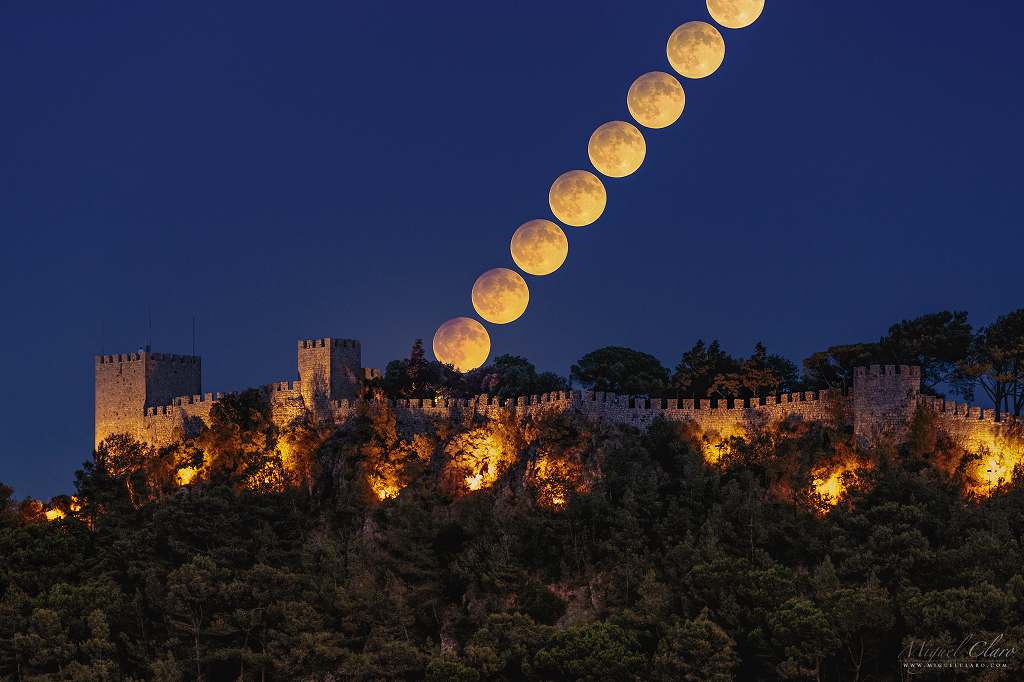
A Harvest Moon rises over Sesimbra Castle south of Lisbon in this impressive series of telephoto exposures. Captured at its full phase, the golden Moon was also gliding through the Earth's more diffuse outer shadow during September's penumbral lunar eclipse. The eclipse shading is subtle compared to a total lunar eclipse. Still, the penumbral shadow does darken the Moon's upper limb, the pale shadow receding as the Moon climbs into Portugal's evening sky. In this eclipse timelapse the effect of sunlight and earthshadow on the Moon looks remarkably like the coloring of light and shadow along the illuminated castle walls. via NASA http://ift.tt/2dfYw5e
Hubble Views a Colorful Demise of a Sun-like Star

This star is ending its life by casting off its outer layers of gas, which formed a cocoon around the star's remaining core. via NASA http://ift.tt/2cMFYGB
Sunset at Edmontonhenge

On September 18, the setting Sun illuminated both sides of the steep brick and steel canyon otherwise known as Jasper Avenue in downtown Edmonton, Alberta, Canada, planet Earth. The Stonehenge-like alignment is captured from the middle of the road in this daring snapshot. In Edmonton streets are laid out on a grid almost oriented along the cardinal directions, so aligned Edmonton sunsets (and sunrises) occur along the nearly east-west streets twice a year, close to the Equinox. In fact, at today's Equinox, the Sun crosses the celestial equator at 1421 UT and on this day the Sun will rise due east and set due west, bringing approximately equal hours of day and night to denizens of planet Earth. The September Equinox marks the astronomical beginning of Fall in the north and Spring in the southern hemisphere. via NASA http://ift.tt/2cTwMRD
Practicing Orion Spacecraft Recovery After Splashdown

A group of U.S. Navy divers, Air Force pararescuemen and Coast Guard rescue swimmers practice Orion underway recovery techniques in the Neutral Buoyancy Laboratory at NASA’s Johnson Space Center to prepare for the first test flight of an uncrewed Orion spacecraft with the agency’s Space Launch System rocket during Exploration Mission (EM-1). via NASA http://ift.tt/2cZqSuR
Final: Dodgers 9 Giants 3. WP: LAD K Maeda (16-9) LP: SF M Moore (11-12) (ESPN)
from ESPN http://ift.tt/1dPqUAn
One Billion Base Pairs Sequenced on the Space Station

NASA astronaut Kate Rubins checks a sample for air bubbles prior to loading it in the biomolecule sequencer. When Rubins’ expedition began, zero base pairs of DNA had been sequenced in space. Within just a few weeks, she and the Biomolecule Sequencer team had sequenced their one billionth base of DNA aboard the orbiting laboratory. via NASA http://ift.tt/2cRwlW4
Space Station Flight Over the Southern Tip of Italy

The southern tip of Italy is visible in this image taken by the Expedition 49 crew aboard the International Space Station on Sept. 17, 2016. The brightly lit city of Naples can be seen in the bottom section of the image. A Russian Soyuz spacecraft can be seen in the foreground. via NASA http://ift.tt/2cAAbBy
Final: Dodgers 2 Giants 1. WP: LAD J Blanton (6-2) LP: SF J Lopez (1-3) (ESPN)
from ESPN http://ift.tt/1dPqUAn
50000 Kilometers over the Sun

What's happening at the edge of the Sun? Although it may look like a monster is rampaging, what is pictured is actually only a monster prominence -- a sheath of thin gas held above the surface by the Sun's magnetic field. The solar event was captured just this past weekend with a small telescope, with the resulting image then inverted and false-colored. As indicated with illustrative lines, the prominence rises over 50,000 kilometers above the Sun's surface, making even our 12,700-diameter Earth seem small by comparison. Below the monster prominence is active region 12585, while light colored filaments can be seen hovering over a flowing solar carpet of fibrils. Filaments are actually prominences seen against the disk of the Sun, while similarly, fibrils are actually spicules seen against the disk. Energetic events like this are becoming less common as the Sun evolves toward a minimum in its 11-year activity cycle. via NASA http://ift.tt/2d5Ewlt
Where the Small Moon Rules

Pan may be small as satellites go, but like many of Saturn's ring moons, it has a has a very visible effect on the rings. via NASA http://ift.tt/2cCH3E7
M33: Triangulum Galaxy
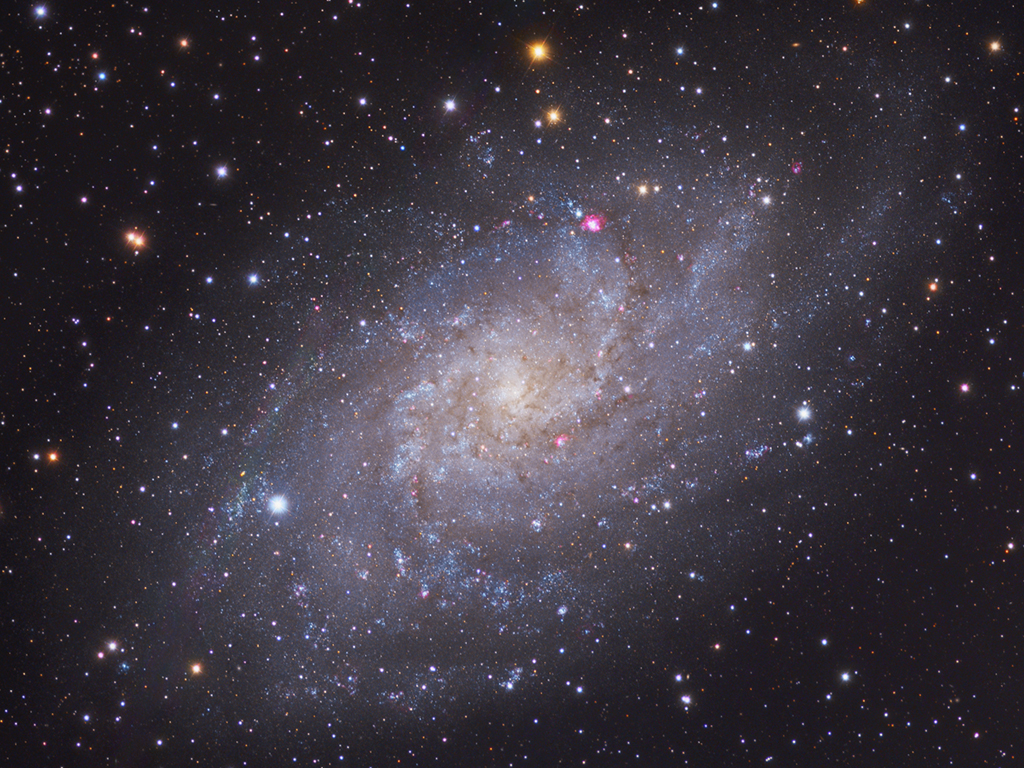
The small, northern constellation Triangulum harbors this magnificent face-on spiral galaxy, M33. Its popular names include the Pinwheel Galaxy or just the Triangulum Galaxy. M33 is over 50,000 light-years in diameter, third largest in the Local Group of galaxies after the Andromeda Galaxy (M31), and our own Milky Way. About 3 million light-years from the Milky Way, M33 is itself thought to be a satellite of the Andromeda Galaxy and astronomers in these two galaxies would likely have spectacular views of each other's grand spiral star systems. As for the view from planet Earth, this sharp composite image nicely shows off M33's blue star clusters and pinkish star forming regions along the galaxy's loosely wound spiral arms. In fact, the cavernous NGC 604 is the brightest star forming region, seen here at about the 1 o'clock position from the galaxy center. Like M31, M33's population of well-measured variable stars have helped make this nearby spiral a cosmic yardstick for establishing the distance scale of the Universe. via NASA http://ift.tt/2d8hsSb
Final: Cardinals 3 Giants 2. WP: STL S Hwan Oh (5-3) LP: SF S Casilla (2-5) (ESPN)
from ESPN http://ift.tt/1dPqUAn
Final: Giants 8 Cardinals 2. WP: SF M Moore (11-11) LP: STL L Weaver (1-3) (ESPN)
from ESPN http://ift.tt/1dPqUAn
Full Moon over Brno

After sunset this gorgeous full moon rose over Brno city in the Czech Republic on July 20, 2016. The panoramic image was made during a celebration of the 47th anniversary of the Apollo 11 lunar landing. A series of exposures captures the yellow hued lunar disk against the fading colors of twilight, with the 14th century Spilberk castle illuminated in the foreground. Of course, tonight's full moon is called the Harvest Moon. The closest full moon to the northern hemisphere's autumnal equinox, its traditional name has long been celebrated in story and song. Tonight's full lunar phase also coincides with a subtle, penumbral lunar eclipse, the Moon passing only through the Earth's diffuse, outer shadow. via NASA http://ift.tt/2cw3LdH
NASA's IceBridge Observes Effects of Summer Melt on Greenland Ice Sheet

NASA's IceBridge, an airborne survey of polar ice, flew over the Helheim/Kangerdlugssuaq region of Greenland on Sept. 11, 2016. This photograph from the flight captures Greenland's Steenstrup Glacier, with the midmorning sun glinting off of the Denmark Strait in the background. via NASA http://ift.tt/2cOTwkk
Final: Giants 6 Cardinals 2. WP: SF J Cueto (16-5) LP: STL A Wainwright (11-9) (ESPN)
from ESPN http://ift.tt/1dPqUAn
Retrograde Mars and Saturn
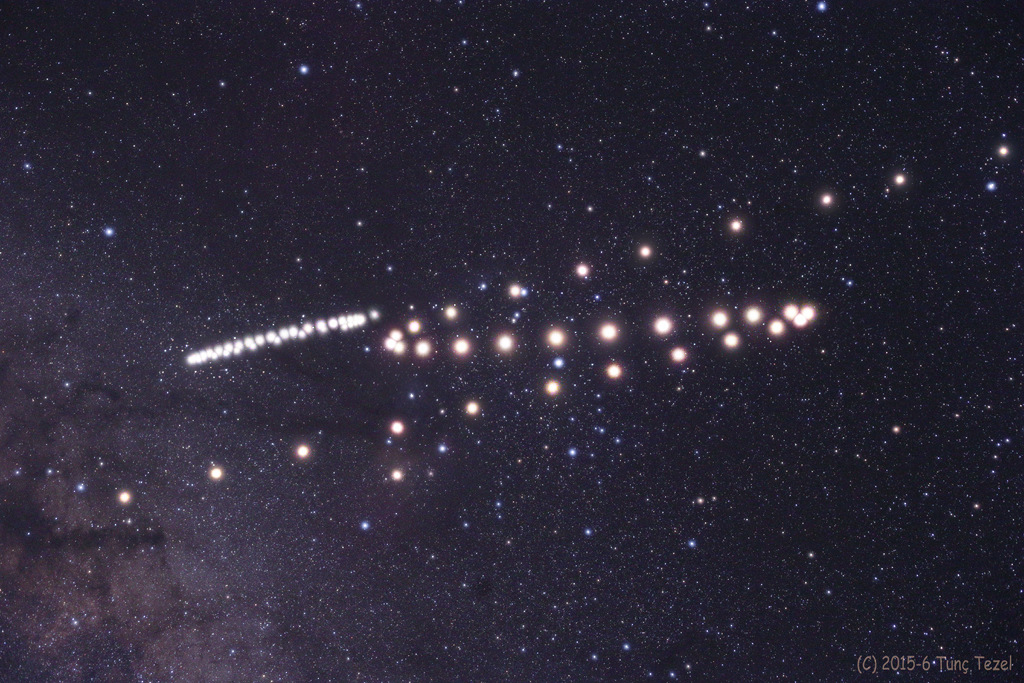
Wandering Mars and Saturn have spent much of this year remarkably close in planet Earth's night sky. In a sequence of exposures spanning mid-December 2015 through the beginning of this week, this composited skyview follows their time together, including both near opposition, just north of bright star Antares near the Milky Way's central bulge. In the corresponding video, Saturn's apparent movement is seen to be back and forth along the flattened, compact loop, while Mars traces the wider, reversing S-shaped track from upper right to lower left through the frame. To connect the dots and dates just slide your cursor over the picture (or follow this link). It looks that way, but Mars and Saturn don't actually reverse direction along their orbits. Instead, their apparent backwards or retrograde motion with respect to the background stars is a reflection of the orbital motion of the Earth itself. Retrograde motion can be seen each time Earth overtakes and laps planets orbiting farther from the Sun, the Earth moving more rapidly through its own relatively close-in orbit. via NASA http://ift.tt/2cpDnjE
Infrared Echoes of a Black Hole Eating a Star

This illustration shows a glowing stream of material from a star, disrupted as it was being devoured by a supermassive black hole. The feeding black hole is surrounded by a ring of dust. This dust was previously illuminated by flares of high-energy radiation from the feeding black hole, and is now shown re-radiating some of that energy. via NASA http://ift.tt/2cIf9V1
The North and South of Jupiter
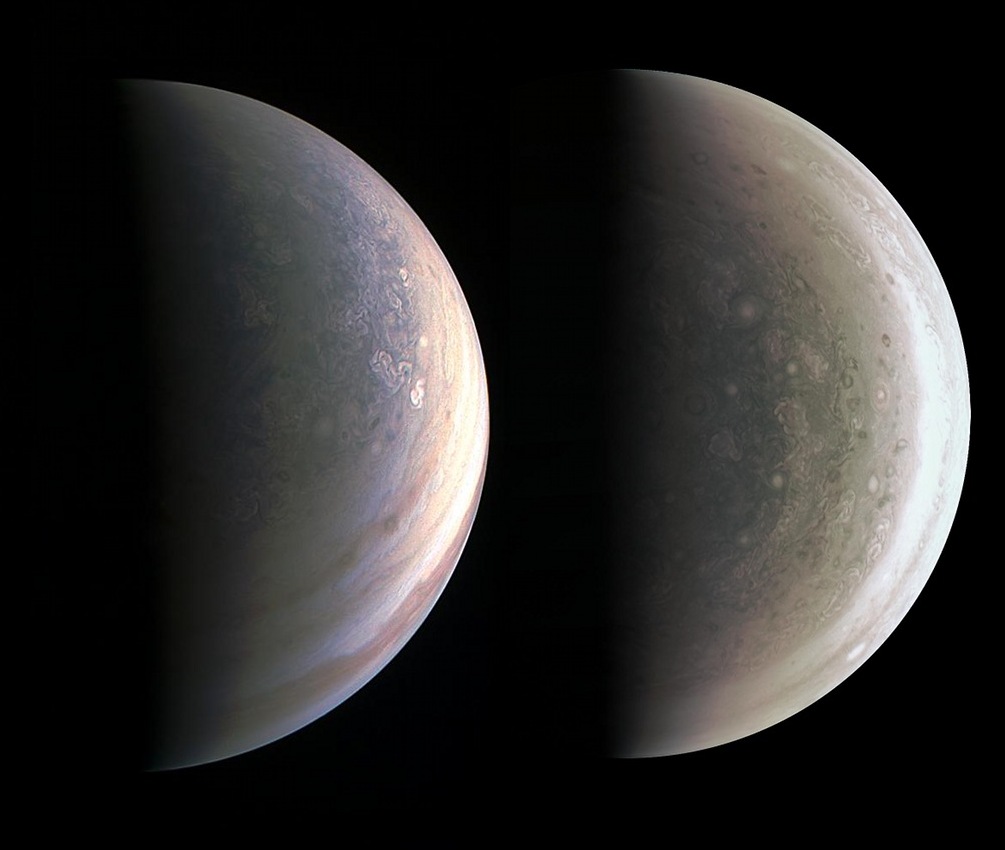
A wide, looping orbit brought Juno close to Jupiter on August 27. As the spacecraft swung around the giant planet's poles JunoCam acquired these premier direct polar views, a change from the usual nearly equatorial perspective of outbound spacecraft and the telescopes of planet Earth. The sunlit side of Jupiter's north polar region (left) was imaged about 125,000 kilometers from the cloud tops, two hours before Juno's closest approach. An hour after close approach the south polar region was captured from 94,500 kilometers away. Strikingly different from the alternating light-colored zones and darker belts girdling more familiar equatorial regions, the polar region clouds appear more convoluted and mottled by many clockwise and counterclockwise rotating storm systems. Another 35 close orbital flybys are planned during the Juno mission. via NASA http://ift.tt/2cZvkxY
Sept. 14, 1966 - View From Gemini XI, 850 Miles Above the Earth

The western half of Australia, looking west, as seen from the Gemini XI spacecraft, 850 miles above the Earth on Sept. 14, 1966. Reaching this record-shattering altitude was a highlight of a demanding, three-day mission for Gemini XI command pilot Charles "Pete" Conrad and pilot Dick Gordon. via NASA http://ift.tt/2cttuTc
A Streamlined Form in Lethe Vallis, Mars

This image shows a portion of Lethe Vallis, an outflow channel that also transported lava. This is one of only a few places on Mars where these pristine-appearing landforms have been identified. The channel formed by catastrophic floods, during which it produced the prominent crater-cored, teardrop-shaped island in the middle. via NASA http://ift.tt/2c6qZ6U
Final: Padres 4 Giants 0. WP: SD P Clemens (3-5) LP: SF J Samardzija (11-10) (ESPN)
from ESPN http://ift.tt/1dPqUAn
At Hangar, Raptors Find Shelter from the Storm

As Tropical Storm Hermine charged up the East Coast Sept. 2, the hangar at NASA Langley was able to carefully sandwich in more than a dozen Air Force fighters and offer them protection from the wind. The hangar provides 85,200 square feet (7,915 square meters) of open space and large door dimensions that allow for entry of big aircraft. via NASA http://ift.tt/2cQVL62
All the Water on Planet Earth
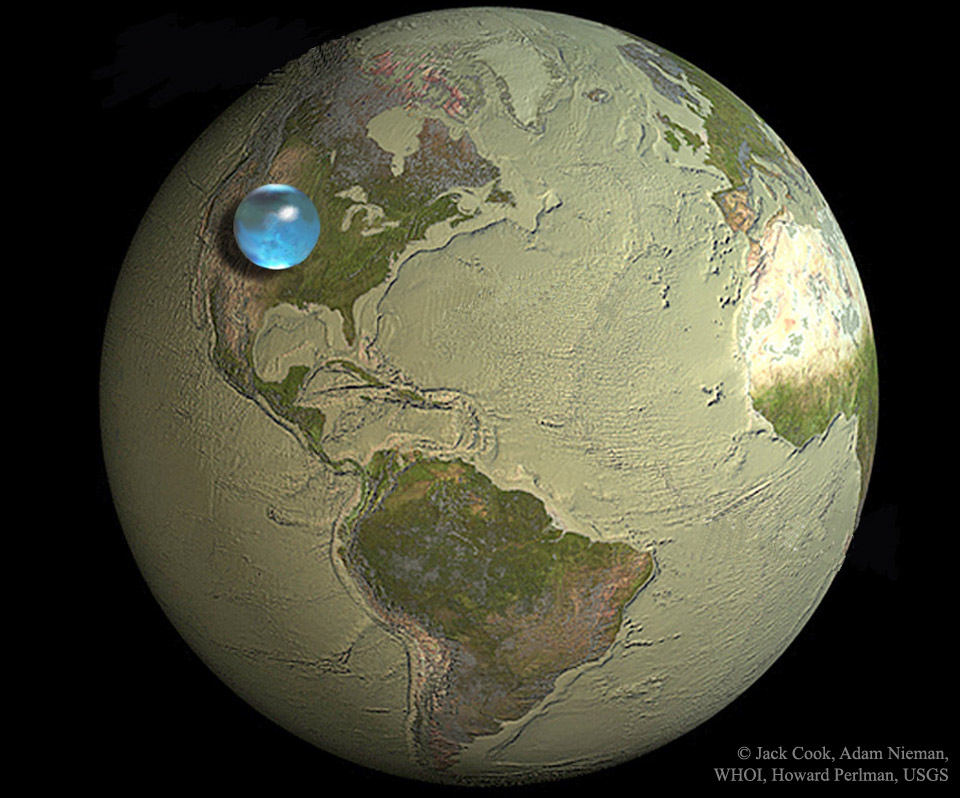
How much of planet Earth is made of water? Very little, actually. Although oceans of water cover about 70 percent of Earth's surface, these oceans are shallow compared to the Earth's radius. The featured illustration shows what would happen if all of the water on or near the surface of the Earth were bunched up into a ball. The radius of this ball would be only about 700 kilometers, less than half the radius of the Earth's Moon, but slightly larger than Saturn's moon Rhea which, like many moons in our outer Solar System, is mostly water ice. How even this much water came to be on the Earth and whether any significant amount is trapped far beneath Earth's surface remain topics of research. via NASA http://ift.tt/2chyvOO
The Launch of OSIRIS REx
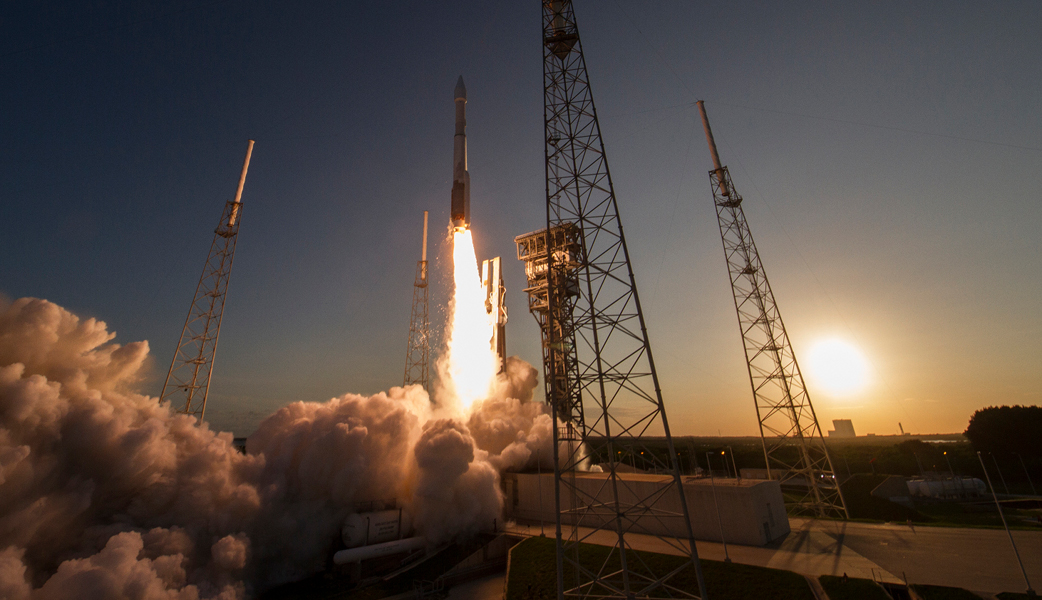
Near sunset on Thursday, clear skies saw the launch of the OSIRIS-REx spacecraft. Sporting a single solid rocket booster, its Atlas V vehicle blasts off from Cape Canaveral's Complex 41 in this low, wide-angle view toward launch pad and setting Sun. OSIRIS-REx is bound for Bennu, scheduled to encounter the mountain-sized asteroid in 2018. First the spacecraft will swing back by home world planet Earth though, for a gravity assist maneuver to boost it on its way. After a detailed survey of Bennu OSIRIS-REx will collect a sample from the asteroid's surface in 2020 and bring it home, returning to Earth in 2023. If all goes well it will be the largest sample returned by a space mission since the Apollo era. via NASA http://ift.tt/2ceGhc9
Final: Giants 11 Diamondbacks 3. WP: SF J Cueto (15-5) LP: ARI A Bradley (6-9) (ESPN)
from ESPN http://ift.tt/1dPqUAn
The Wide and Deep Lagoon

Ridges of glowing interstellar gas and dark dust clouds inhabit the turbulent, cosmic depths of the Lagoon Nebula. Also known as M8, the bright star forming region is about 5,000 light-years distant. But it still makes for a popular stop on telescopic tours of the constellation Sagittarius, toward the center of our Milky Way Galaxy. Dominated by the telltale red emission of ionized hydrogen atoms recombining with stripped electrons, this stunning, deep view of the Lagoon is nearly 100 light-years across. Right of center, the bright, compact, hourglass shape is gas ionized and sculpted by energetic radiation and extreme stellar winds from a massive young star. In fact, the many bright stars of open cluster NGC 6530 drift within the nebula, just formed in the Lagoon several million years ago. via NASA http://ift.tt/2cJXEnU
Hubble Peers into the Storm

Hubble sees a maelstrom of glowing gas and dark dust within one of the Milky Way’s satellite galaxies, the Large Magellanic Cloud. via NASA http://ift.tt/2cfZtVm
Mars in the Clouds

Wandering through this stunning field of view, Mars really is in front of these colorful cosmic clouds. The mosaic contructed from telescopic images is about 5 degrees (10 full moons) across. It captures the planet's position on August 26, over 7 light-minutes from Earth and very near the line-of-sight to bright star Antares and the Rho Ophiuchi cloud complex. In the exposure yellow-hued Mars, above and left, is almost matched by Antares, also known as Alpha Scorpii, below center. Globular star cluster M4 shines just right of Antares, but M4 lies some 7,000 light-years away compared to Antares' 500 light-year distance. Slightly closer than Antares, Rho Ophiuchi's bluish starlight is reflected by the dusty molecular clouds near the top of the frame. via NASA http://ift.tt/2cn8BuV
OSIRIS-REx Asteroid Mission Launch

The United Launch Alliance Atlas V rocket carrying NASA's Origins, Spectral Interpretation, Resource Identification, Security-Regolith Explorer (OSIRIS-REx) spacecraft lifts off on from Space Launch Complex 41 on Thursday, Sept. 8, 2016 at Cape Canaveral Air Force Station in Florida. via NASA http://ift.tt/2cHNiEK
OSIRIS-REx Asteroid Sample Return Mission at the Launch Pad

The ULA Atlas V rocket with NASA's Origins, Spectral Interpretation, Resource Identification, Security-Regolith Explorer (OSIRIS-REx) spacecraft on board is seen illuminated in the distance in this thirty second exposure on Wednesday, Sept. 7, 2016, at Cape Canaveral Air Force Station in Florida. OSIRIS-REx is scheduled to launch Sept. 8. via NASA http://ift.tt/2cIwNcT
Final: Rockies 6 Giants 5. WP: COL J Lyles (4-4) LP: SF J Osich (1-3) (ESPN)
from ESPN http://ift.tt/1dPqUAn
Expedition 48 Crew Returns Home

The Soyuz TMA-20M spacecraft is seen as it lands with Expedition 48 crew members NASA astronaut Jeff Williams, Russian cosmonauts Alexey Ovchinin, and Oleg Skripochka of Roscosmos near the town of Zhezkazgan, Kazakhstan on Wednesday, Sept. 7, 2016(Kazakh time). Williams, Ovchinin, and Skripochka are returning after 172 days in space. via NASA http://ift.tt/2bTdurb
Expedition 48 Crew Lands Safely on Earth

The Soyuz TMA-20M spacecraft is seen as it lands with Expedition 48 crew members NASA astronaut Jeff Williams, Russian cosmonauts Alexey Ovchinin, and Oleg Skripochka of Roscosmos near the town of Zhezkazgan, Kazakhstan on Wednesday, Sept. 7, 2016 (Kazakh time). via NASA http://ift.tt/2cEVHdn
Expedition 48 Crew Preparing to Return Home

Expedition 48 Commander Jeff Williams of NASA returns to Earth Tuesday, Sept. 6, 2016, after a five-and-a-half-month mission aboard the International Space Station. Williams captured this photograph and wrote, "I will certainly miss this view! Vast gratitude toward my crewmates, ground teams, supporting friends, and family." via NASA http://ift.tt/2bV7T75
Final: Rockies 6 Giants 0. WP: COL C Bettis (12-7) LP: SF M Moore (9-11) (ESPN)
from ESPN http://ift.tt/1dPqUAn
F/13: Cubs 3 Giants 2. WP: CHC T Cahill (4-4) LP: SF M Reynolds (0-1) (ESPN)
from ESPN http://ift.tt/1dPqUAn
Final: Cubs 2 Giants 1. WP: CHC J Lester (15-4) LP: SF A Suarez (3-3) (ESPN)
from ESPN http://ift.tt/1dPqUAn
Jupiter Down Under

This image from NASA's Juno spacecraft provides a never-before-seen perspective on Jupiter's south pole. via NASA http://ift.tt/2caKPR1
Light at the End of the Road

The bright light at the end of this country road is actually a remarkably close conjunction of two planets. After sunset on August 27 brilliant Venus and Jupiter almost appear as a single celestial beacon in the night skyscape taken near Lake Wivenhoe, Queensland, Australia. A spectacular vertical panorama from the southern hemisphere, it shows the central Milky Way near zenith, posed on top of a pillar of Zodiacal light along the ecliptic plane. Of course Mars and Saturn are near the ecliptic too, just below the galaxy's central bulge. Above and left of a tree on the horizon, fleeting planet Mercury also adds to the light at the end of the road. via NASA http://ift.tt/2bKVtvz
Ceres' Mountain Ahuna Mons: Side View

Ceres' lonely mountain, Ahuna Mons, is seen in this simulated perspective view. The elevation has been exaggerated by a factor of two. The view was made using enhanced-color images from NASA's Dawn mission. via NASA http://ift.tt/2c81958
Subscribe to:
Posts (Atom)